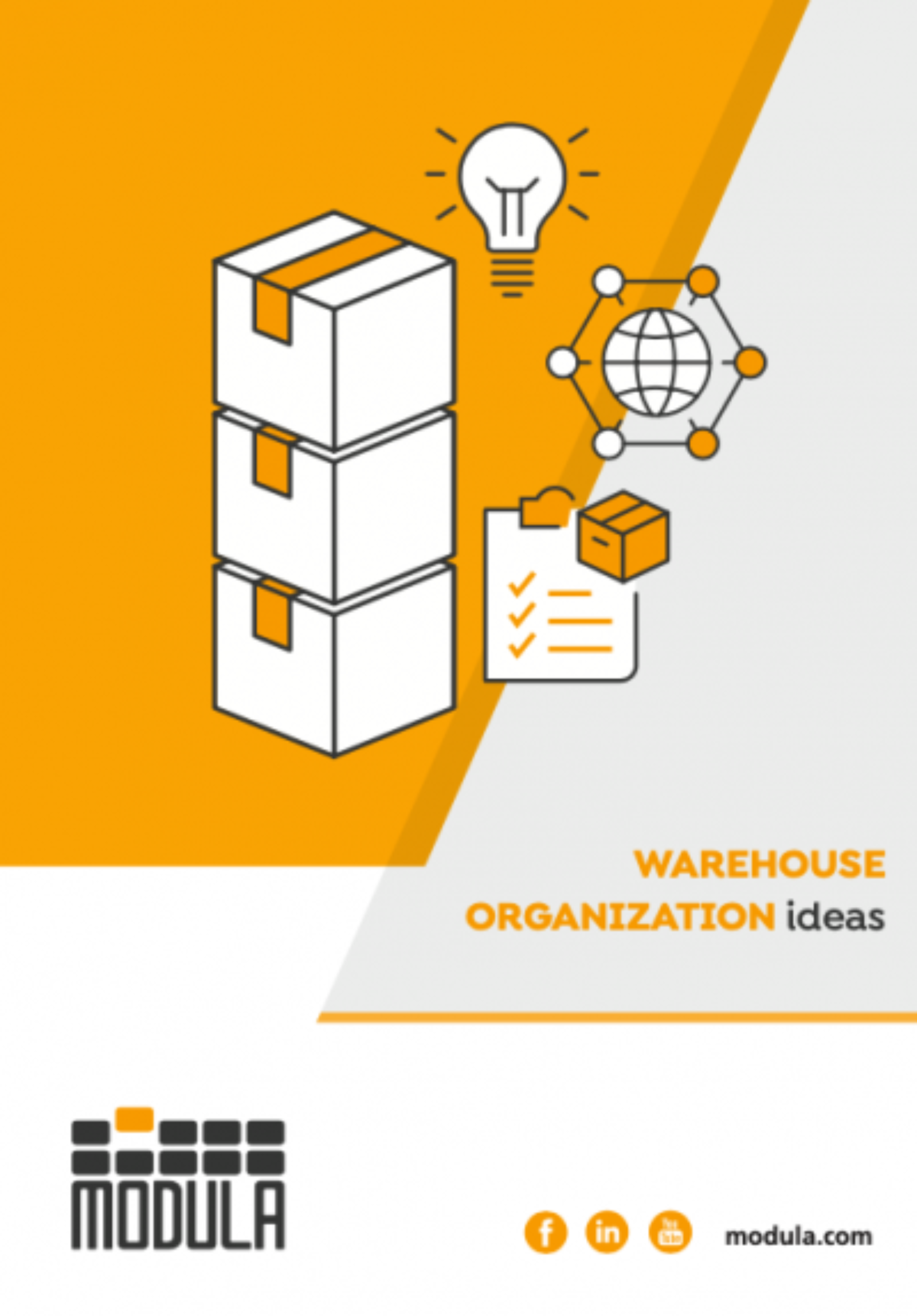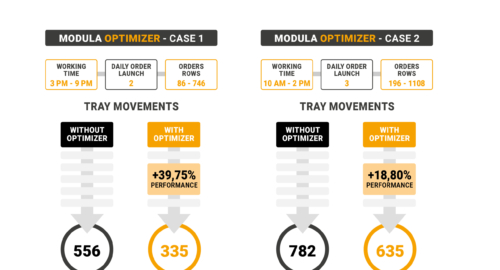This is the actual question everyone asks themselves and no one knows the right answer to. We usually talk about problems and analyse them from a theoretical point of view, but in the end no real solution is demonstrated that we can apply.
A lot of businesses decide what quantities to stock on a subjective basis using intuition and experience. The well-known “by the looks of it, we could use 500”. In reality, the issues we should consider objectively before making certain choices are many and all very important.
Some factors, however, are often underestimated, such as:
- An item’s specific characteristics.
- Predicted demand and possible future price.
- Replenishment capability i.e. availability of the product and delivery times.
Moreover, maybe out of laziness or perhaps a lack of time, we tend to want to issue enormous orders and ignore two important factors of company management:
- Costs (and return) of maintaining or running out of stock;
- Specific objectives for which a particular quantity of stock is kept.
Amongst the costs of maintaining stock, we have identified 5:
- Cost of procurement/production
This is the amount paid to the supplier or amount to be borne as total cost of production. This only represents a true stock management cost if the price paid to the supplier (or cost of manufacture) varies for each individual procurement/production batch (in practice there is usually the possibility of utilising quantity discounts). - Cost of ordering
This is the cost incurred in the simple fact of issuing an order and then having to proceed with activities such as goods inwards, checks or storage. This is a cost which is unconnected to the quantity acquired and is made up of e.g. staffing costs, processing of procurement documents, bank charges, fees for data processing.
- Cost of holding
This is the cost that a business incurs for the simple fact of having to hold goods in a warehouse. These goods actually freeze capital, take up space and, sometimes, require maintenance. This cost is made up of components which do not vary according to the quantity of stock being held (warehouse rent, dedicated personnel, etc.) and those that do vary according to the quantity (insurance, interest on invested capital, etc.). It is convenient to express the cost of holding stock as a percentage of the value of the stored goods in a certain time period.
- Cost of depreciation
This is the cost linked to the physical and/or technical deterioration (obsolescence) of the goods sitting long-term in the warehouse. This cost can be expressed in 2 different ways:
– As an annual percentage of the value of the goods in the warehouse (e.g. we can say that the warehouse “depreciates” at 3% per year).
– In euros per unit of goods remaining in the warehouse at year end. In this case, the amount could be calculated as the difference between the sale price and production price.
- Cost of no stock
This is the cost incurred from the inability to despatch requests promptly due to a lack of stock. If the client is able to wait (e.g. in a monopoly situation), the cost of having no stock may not actually exist or may be measured in euros per missing unit or per unit of time (this is the typical case of penalties for delayed delivery). If the client is not able to wait (more common), the business loses the sale and therefore registers a loss of earnings to be expressed in euros per missing unit.
Company objectives can be perceived differently by different company departments, but they obviously all have one purpose: maximising profits.
The sales department could urge the company to maintain high stock levels in order to avoid late deliveries, or the procurement department might want this to reduce unit costs and the production department might want to reduce unit costs by increasing production batch sizes. On the other hand, those in charge of administration or management might want to keep stocks low in order to minimise financial outlays or simply to minimise the quantities to be held/maintained.
However, all of this must result in providing an adequate service level (suitable to the type of product, company, competition, clients) and which is able to ensure the best relationship between costs and revenues.
In order to do this, you first need to have a series of information about:
- inputs
- outputs
- constraints
1. Information needed to manage stocks well in relation to inputs
- Suppliers and their habits
Anyone performing stock management must know their current and future suppliers well. If these are numerous, or if there are several supply alternatives, or if these are scarce, there are several ways of entering into partnerships which ensure effective and efficient stock replenishment. It is also worth knowing how quickly they can deliver, whether they are punctual, and also their ability to satisfy urgent or unscheduled requirements. - Price
A high or low price for a material or product impacts directly on the level of investment that a company can sustain. This variability can affect whether supply or production planning can be anticipated or must be deferred. - Preset batches
All production systems and almost all suppliers will impose preset batch sizes below which they will not be able to produce or acquire a specific product. Minimum batch sizes are perhaps the issue that has the greatest impact on stock levels held by businesses under normal circumstances as they are required to accept resupply quantities above what they really need. - Payment terms
A business which acquires or produces goods before they are needed (well before consumption or sales figures are known) will see its storage costs increase. This is obviously mitigated by any delay in making payments to suppliers. As long as the goods are not paid for, there is no actual freezing of capital.
2. Information needed to manage stock well in relation to outputs
- Clients and their habits
As for suppliers, anyone managing stock levels must know their current and future clients well. If you are very concerned about service, you will not be willing to accept that goods run out of stock. If you are not very concerned about service, you could take some risks in the interest of minimising safety stock levels. It is essential to know if these clients are always the same or whether they change frequently. You cannot satisfy a demand if you are not aware of this. - Deterioration and obsolescence of goods
Some products cannot be stored for long as they expire and some products have an unlimited shelf life. Some products never change and never go out of favour with the market, and there are some which, although remaining intact, will sit gathering dust in the warehouse. The stock manager must know all the products well. Everything carries a storage cost, but some things cost more than others and speculating on stocks (discounted quantities) of perishable products or those at risk of obsolescence can end up costing you dearly. - Future demand
This is at the same time one of the most important pieces of information to have and yet the most difficult to obtain. A business (not working with orders in hand) cannot resign itself to not making predictions and it is always worth trying to use scientific systems for this purpose. Remember that sales and marketing departments must also make predictions, but if this is not the case, this duty must fall to the stock manager.
3. Information needed to manage stocks well in relation to constraints
- Available space
The available space in the warehouse is a constraint which can have a major effect on stock management. For example, having ample space allows you to bring in supplies in large batches which can simplify goods inwards activities but which obviously risks taking up the entire warehouse. A small space, however, restricts you to frequent and well-organised replenishment. Sometimes in the world of business we encounter a paradox: the most well-organised companies are those with the least amount of space. This is because they rely on automatic vertical storage technology (this video shows a great example: Fully-automated Warehouse Logistics reorganization for the mechanical producer NR). - Internal management resources
These are all those resources which have a substantial impact on the performance of replenishment and distribution processes such as the availability of workers and warehouse staff and automated picking and refilling systems. Companies which invest most wisely obtain unquestionable competitive advantages. - Financial constraints
The “richest” companies are always in a better position than less rich ones even in the logistics field. This may seem obvious but it is true. Companies with financial resources can choose to buy in large or small quantities, or between speculative or purely physiological stocks, between automatic or manual warehouses, large or small, or between internal management or outsourcing.
Ideas for warehouse reorganization



